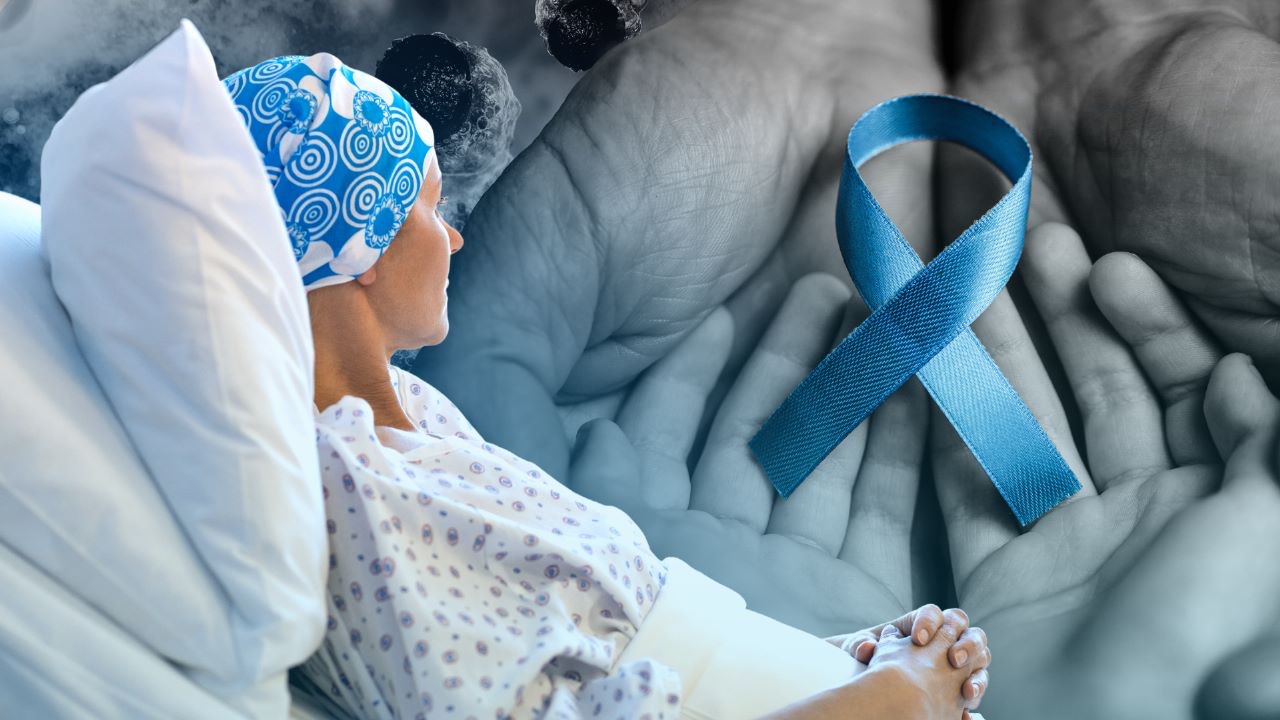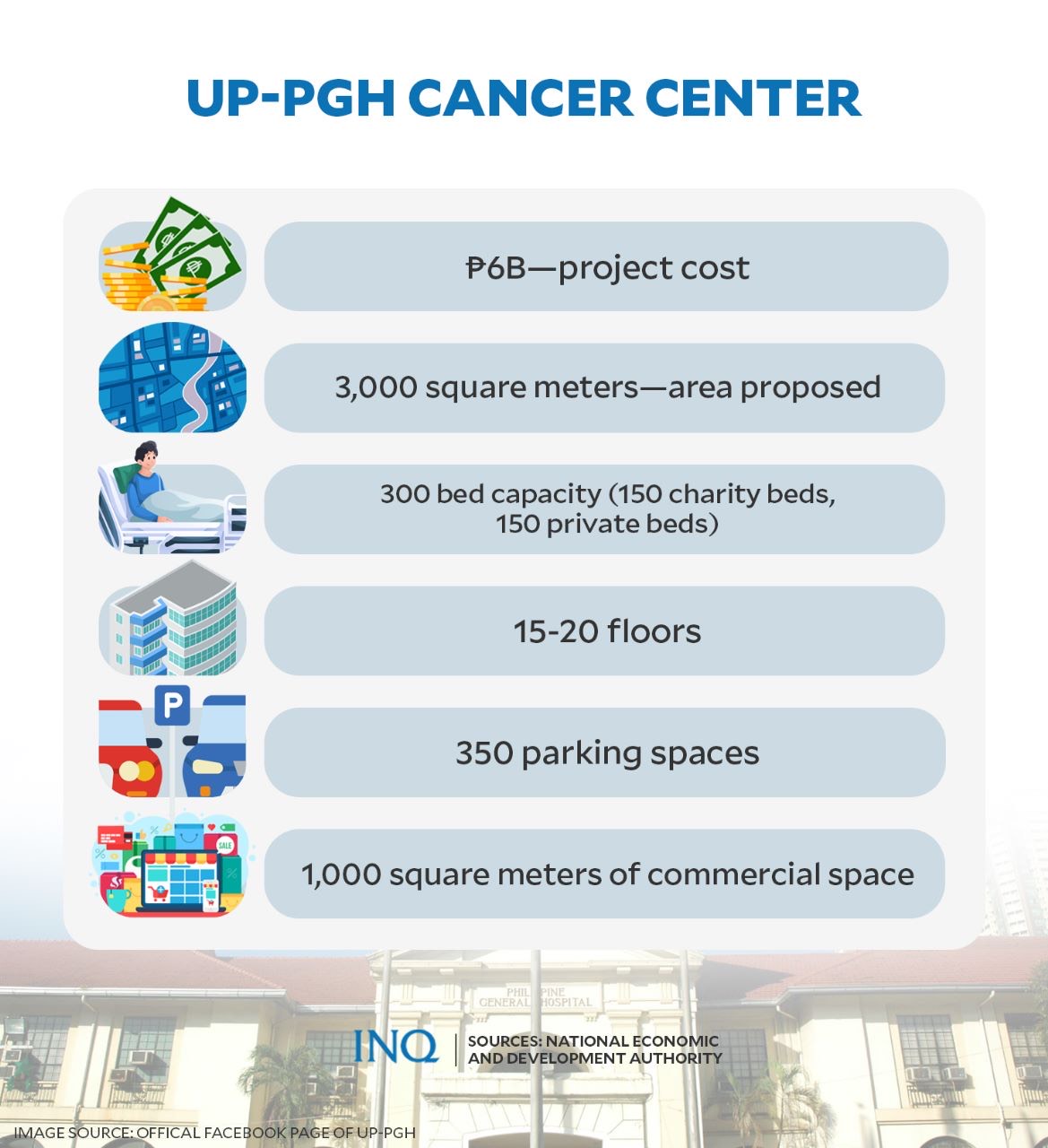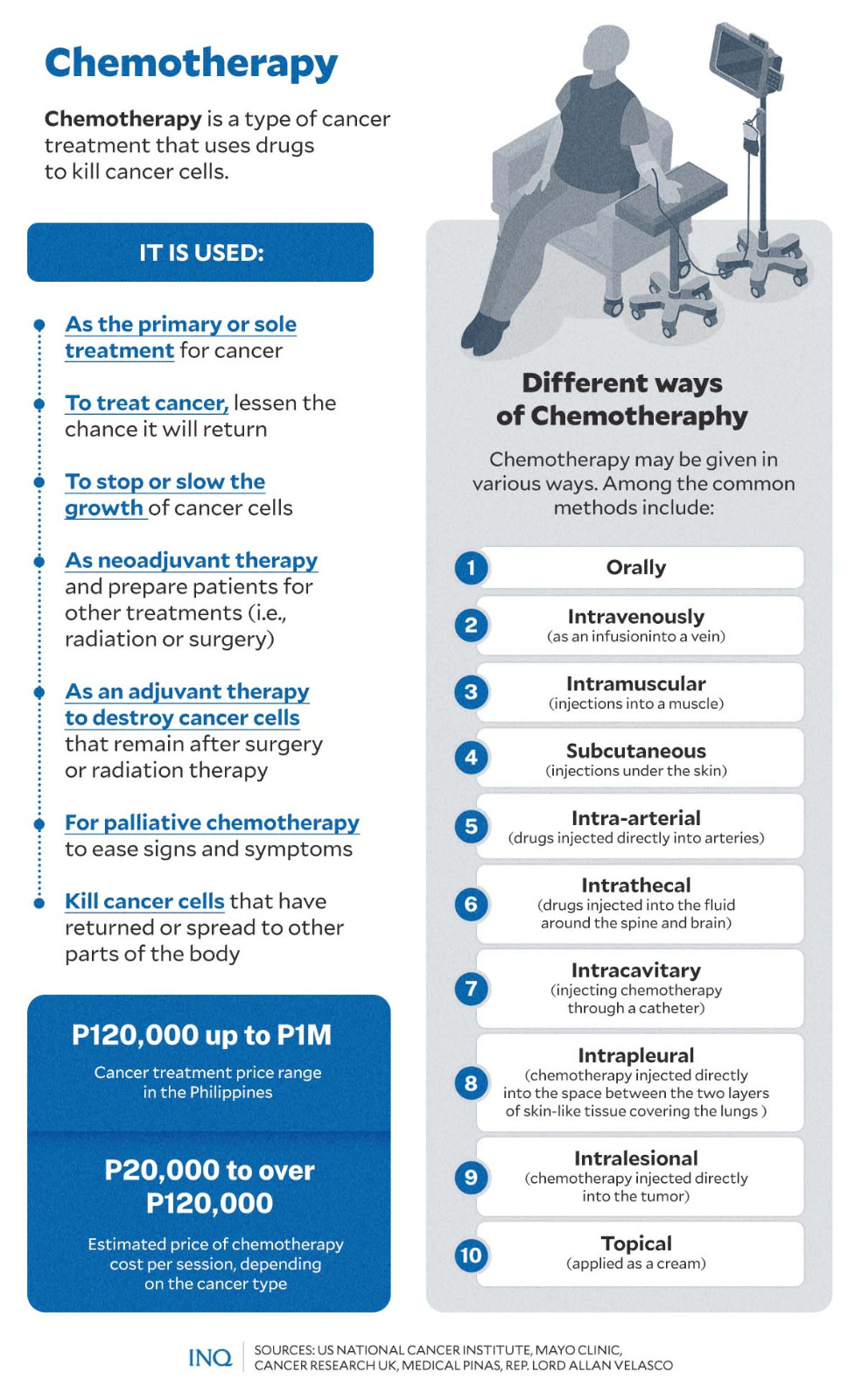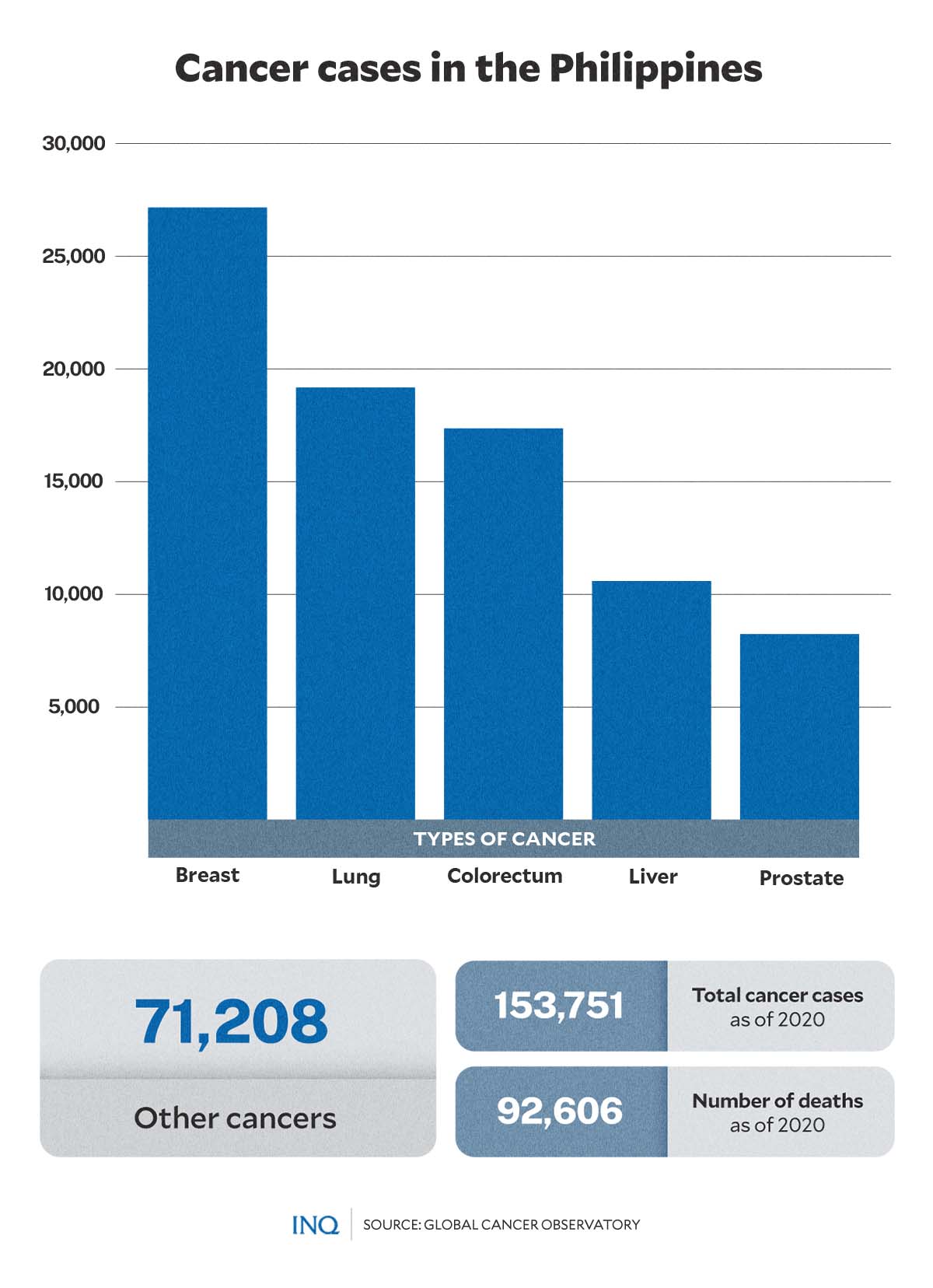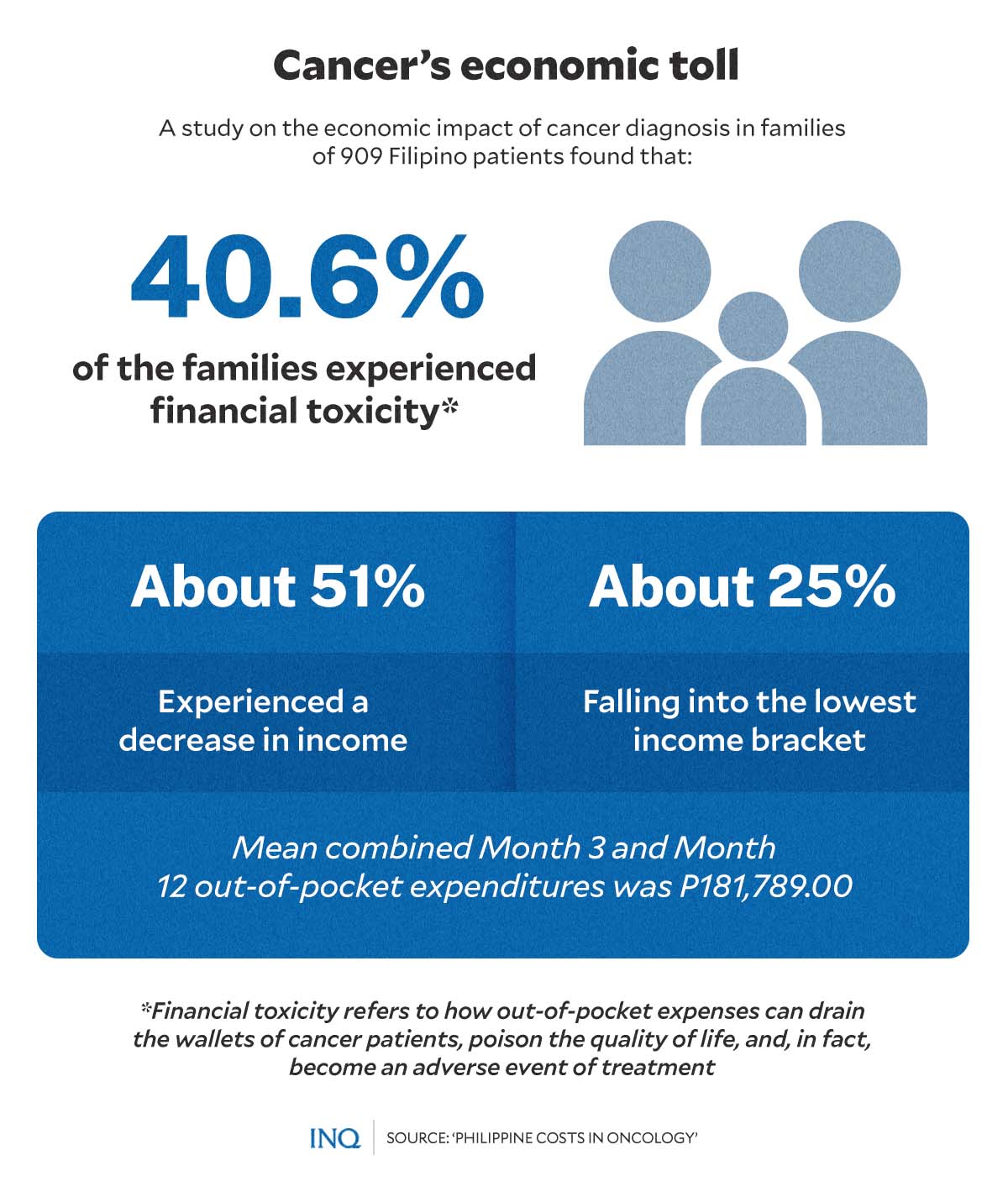Long lines, lengthy treatment wear out PH cancer patients
MANILA, Philippines—Cancer is among the most debilitating diseases. Aside from pain caused by cancer cells attacking the body, patients also have to go through exhausting stages of the excruciating treatment journey that are often overlooked.
In the Philippines, at least 153,751 Filipinos suffer from various types of cancer. Awareness about cancer being one of the leading causes of death in the country led to several measures being implemented and organizations being founded to prevent cancer and improve cancer survivorship.
These health mechanisms on cancer control services range from early screening and detection procedures, hospitalization benefits, and access to free cancer medication to providing support to cancer patients and families as they go through and cope with the impact of the Big C.
Still, despite these efforts, many patients have to spend a lot of time and energy—not just for their treatment—but also for commuting to and from hospitals and waiting for hours in line to receive medication.
Cancer care and treatment
Cancer treatment involves various methods—radiation therapy, immunotherapy, targeted therapy, and chemotherapy. The last, according to the US-based Mayo Clinic, is the most often used treatment method.
Chemotherapy is a cancer treatment that uses powerful medicines to eliminate fast-growing cancer cells in the body. Different types of chemotherapy are offered to cancer patients, all of which aim to prevent cancer cells from growing and spreading.
This cancer treatment may be used on patients for a variety of reasons:
- as a primary or sole treatment for cancer
- to be used following other treatments—such as surgery or radiation therapy—to kill any remaining cancer cells (adjuvant therapy)
- to shrink a tumor as part of preparations for other treatments (neoadjuvant therapy)
- to relieve signs and symptoms by killing cancer cells (palliative therapy)
“In general, drugs used for chemotherapy are powerful chemicals that treat cancer by attacking cells during specific parts of the cell cycle. All cells go through the cell cycle, which is how new cells are made,” explained the American Society of Clinical Oncology (ASCO).
“Cancer cells go through this process faster than normal cells, so chemotherapy has more of an effect on these fast-growing cells,” ASCO added.
An oncologist (cancer specialist) determines a chemotherapy plan depending on many factors. These involve the type of cancer, stage of cancer, patient’s age, general health and body weight and patient’s previous cancer treatments.
The specialist also considers the possible side effects of each drug used during chemotherapy on patients and other existing medical conditions that patients have.
’Not superior, nor inferior’
Cancer Research UK stated that the most common ways of administering chemotherapy drugs into a patient’s body are intravenously or directly into the bloodstream as an injection or through an IV drip and orally or taken as tablets or capsules.
Among the less common ways of chemotherapy are injections under the skin, also called subcutaneous. This method usually injects the chemotherapy drug under the skin of the abdomen, thigh or upper arm.
According to Dr. Jorge Ignacio, oncologist and chair of the Cancer Institute of UP-Philippine General Hospital (UP-PGH), not all chemotherapy drugs have a subcutaneous preparation.
“Only Tratuzumab, Rituximab, Xgeva, and some hormonal drugs have subcutaneous preparation,” Ignacio told INQUIRER.net.
He stressed that, although some ways of getting chemotherapy drugs were more common than others—specifically IV and subcutaneous—both are effective, “not superior or inferior.”
The difference between the two lies in convenience and cost.
“IV takes longer preparation and infusion, aside from needing IV fluids, tunes, and needles,” said Dr. Ignacio.
“Subcutaneous is more expensive than IV,” he added.
Waiting for their turn
At the UP-PGH Cancer Institute, which offers quality comprehensive cancer treatment, charity inpatients and outpatients receive chemotherapy mostly through an IV drip.
However, since a single session of IV chemotherapy takes from 20 minutes to several hours—on top of that, the UP-PGH Cancer Institute has a limit of 100 IV chemotherapy per day—lines usually form outside the hospital’s Cancer Institute building.
Netizens posted online that the queue for cancer patients scheduled for chemotherapy starts as early as 4 in the morning and patients wait for hours to receive treatment. A patient shared that on some days, they finish chemotherapy and get to go home as late as 10 or 11 pm.
In an opinion piece published in Inquirer.net, Ricardo Javier Cortez, a former marketing executive, shared what a day in the life of a cancer patient in the country looks like—which emphasized the long waiting hours to receive medical attention.
Cortez said he had to get up as early as 4 am and leave the house an hour after to beat the traffic and the hospital crowd. Only after nine hours will his name be called for a chemotherapy session.
However, even though his treatment started, he was told to wait again for the chemotherapy medicine due to an emergency meeting at the pharmacy.
“We had been out all of 11 hours. We could hardly believe how we got through—with the long ride, the deafening roar of jets overhead, the heat that our portable mini-fan failed to overcome, and the confusion over my appointment schedule.”
READ: A test of patience: A day in the life of a cancer patient in the Philippines
Providing treatment to more patients
Dr. Ignacio said the UP-PGH Cancer Institute is currently making an effort to solve this and provide chemotherapy treatment to more indigent patients.
“The lines can be addressed by adding more pharmacists to compound the drugs and bigger chemotherapy room to accommodate more patients. We are currently addressing the problem by hiring more pharmacists,” he detailed.
“The room limitation will be solved if we will be able to construct the new cancer center. We meet regularly just to minimize these problems,” he continued.
He added that charity patients should be prioritized for the limited supply of chemotherapy drugs.
“We have to be judicious in using our cancer funds. We should be able to provide first for charity patients. Private patients may share with this fund if there is enough to provide for both charity and private.”
Earlier this month, the National Economic and Development Authority (Neda) board approved the establishment of a P6-billion UP-PGH Cancer Center, a “dedicated cancer hospital that will modernize its health infrastructure and offer comprehensive, high-quality, and affordable oncology services towards enhancing the country’s health service quality and capacity for cancer care.”
The Cancer Center, with an area of 3,000 square meters, will have a capacity of 300 beds, 150 of which will be for charity, and the other 150 will be private beds.
The establishment, within the UP-PGH in Manila, will also have 15 to 20 floors, 350 parking spaces, 1,000 square meters of commercial space, and an area for three linear accelerator bunkers.
READ: Marcos admin OKs 1st PPP project: P6-B UP-PGH Cancer Center
According to Socioeconomic Planning Secretary Arsenio Balisacan, who also heads Neda, PGH services will not be privatized despite the UP-PGH Cancer Center being a public-private partnership.
“The government shall own the entire facility, and it shall continue to operate as a public hospital,” he said.
